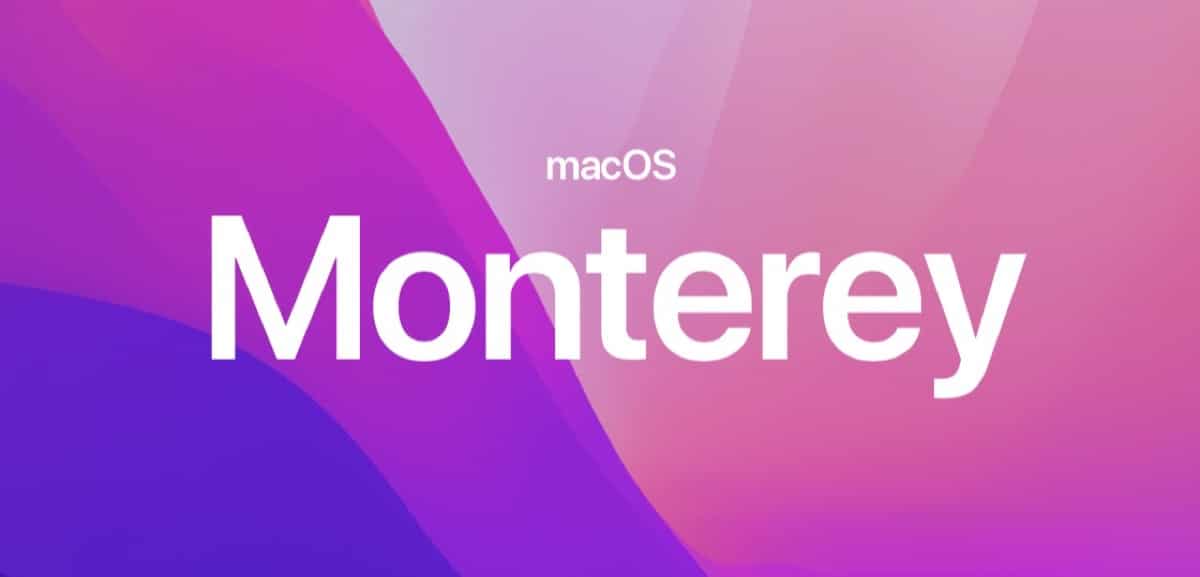
A little over a week ago, the possibility of installing the beta of macOS Monterey or macOS 12 was released for developers. We tell you how you could install this Beta on your Mac but maybe after a while, you don't like how it works, problems or your expectations have not been met. For this we have the perfect solution which is go back to macOS Big Sur. Learn how to do it.
The new macOS 12 brings several new features and improvements, but it's not a huge leap in terms of user interface. It is rather continuous for what I knowif you'd rather go back to before the days of developer beta, then this is how you can downgrade from macOS 12 beta to macOS Big Sur.
Before you go through with the process of going back or as it is often called, downgrade, there are a couple of things you should do. First of all, we hope you made a Backup before updating to the beta version. That way you can restore from a backup after you've removed macOS 12 beta from your Mac.
The second thing you should know is that in order to return to macOS Big Sur you must erase macOS 12. If you installed it on a partition, you can simply delete the partition and your Mac will boot into macOS Big Sur. But if you did a fresh install of macOS 12 beta on your Mac's main drive, then you will have to perform a few more steps.
Clear macOS 12 Monterey beta
We recommend that you have Ready a bootable USB installer for macOS 11 Big Sur before clearing the beta version of macOS 12. Remember that this method is for those who did a new installation of macOS 12 beta on their Mac on the main disk without partitions.
- Click on the apple logo in the menu bar and select Restart.
- Now hold down Command + R until the menu appears Utilities.
- Choose Startup security utility, enter the password and enable Allow booting from external media.
- Now, reboot and return to the Utilities menu following Step 2.
- Under Utilities, select Disk Utility, click on Continue and choose the Disk Of start (probably called Macintosh HD)
- Click on Delete at the top of the page and choose a format. Enter a new name for your Mac drive or go with Macintosh HD. Newer Macs use APFS, while older systems run on HFS + (MacOS Journaled).
- Once again, click the button Delete and wait for the process to finish.
Reinstall macOS Big Sur
To perform a clean install of macOS Big Sur, you will need to use USB drive boot you created.
- Plug in the bootable USB drive, wait for it to boot, and click in apple logo in the menu bar. Make sure you are connected to the internet.
- Click on Delete.
- If you are using a Mac with Apple Silicon, press and hold the button ignition until the Options window appears Of start. On an Intel Mac, press and hold the Option key right after turning it on.
- In the next menu, choose the startup disk, which is the bootable USB pen drive.
- Click on Continue or press the Enter key.
The macOS Big Sur update will now start to install as a standard upgrade. Just follow the instructions, choose a language, agree to the software terms, provide iCloud details, and more.
As you see It is not very difficult to do, although it is quite tedious. That is why we always recommend that beta installations, especially Macs, be carried out on secondary devices, since if any step of the process fails, the equipment that may become obsolete or like a stone, will be a non-main one that although it hurts it won't hurt as much if we screw up the principal we work with every day.
Nothing happens to install betas and downgrade again but you should always do it following a maxim: Do it only if you know what you are doing. Don't venture out, gather information, and then jump into the pool, as they say.